Mangesh S. and Atharv Joshi
Artist rendition of Antimatter Rocket.
One may no doubt be aware of the existence of 'Antimatter'. This topic was addressed for the general public in the science-fiction novel 'Angels and Demons', written by Dan Brown. The entire story revolves around this particular form of matter, and the potential it has for energy.
What exactly is antimatter?
The Universe is believed to have three symmetries, the Charge, Parity and Time symmetry. Antimatter is just the symmetrical twin of matter. It is opposite in charge (for example, an anti-electron will have a positive charge, instead of negative), parity (it will have the opposite spin; if the electron has a spin of +1/2, the anti-electron will have a -1/2 spin), and time (an anti-electron is theorised to be an electron moving back in time). Now, the funny thing is, all three properties would have to be flipped to get a stable universe. Flipping any one property will result in an unstable universe. Thus, the properties of antimatter cause it to be the exact opposite of matter. This is very important, as you will see later on.
The physicist, Paul M. Dirac, in 1928, while solving the Schrodinger wave equation relativistically, he found in them a slight inconsistency. He discovered that E=±mc2, not just the positive value of it. This implied the existence of energy 'pockets', that contained matter with opposite properties to that of normal matter.
The existence of antimatter was discovered by Carl Anderson in 1938, using a cloud chamber, which we have constructed. The first antiparticle ever discovered was the positron (a contraction of positive-electron) or the anti-electron. Weirdly enough, an anti-electron can be thought of a reverse charged and reverse-spin electron going back in time!
First ever positron photograph of positron taken in cloud chamber.
The term antimatter was first used by Arthur Schuster in two rather whimsical letters to Nature in 1898, in which he coined the term. He hypothesized antiatoms, as well as whole antimatter solar systems, and discussed the possibility of matter and antimatter annihilating each other. Schuster's ideas were not a serious theoretical proposal, merely speculation, and like the previous ideas, differed from the modern concept of antimatter in that it possessed negative gravity.
Almost all matter observable from the Earth seems to be made of matter rather than antimatter. If antimatter-dominated regions of space existed, the gamma rays produced in annihilation reactions along the boundary between matter and antimatter regions would be detectable. Since this is an occurrence that is not observed, save along the event horizons of super-massive black holes, we can safely assume that there are very few such regions of antimatter dominated space, all beyond 13.7 billions light years away (this is because 13.7 billion years is the estimated age of the universe, and any light has to travel that distance or less to reach us).
What is a Cloud Chamber? How does it work?
A cloud chamber is a device, invented by Charles Thomson Rees Wilson, used to observe trails of ionic particles that are usually too small to be seen with the naked eye. It consists of a sealed environment, containing supersaturated vapours of alcohol or water, as clouds.
The cloud chamber constructed by us is a small 20x20x15 acrylic box. Using felt as the source of the alcohol (ethyl alcohol, 99.9%), and dry ice at the bottom of the box to achieve the required temperature, we succeeded in causing the alcohol to supersaturate in the air between the walls of the box.
Now, what happens is, when any alcohol is in supersaturated state, between liquid and vapor phase, it is in unsteady equilibrium. When ionic particles such as electrons, or positrons (beta particles), or alpha particles (positively charged nucleons) pass through the vapours, they rip the electrons from the atoms in the vapour, causing the equilibrium to collapse, causing the vapour to condense on the ions. This creates a trail through the air large enough to be observed by the naked eye.
Ionic trails visible inside a cloud chamber.
The Sodium-22 radionuclide, the isotope used in this experiment, is a natural emitter of positrons. It is a radioactive element, with a half-life of 2.7 years. It undergoes Beta decay in two forms, the β- (electron capture) 7.2% of the time; and the β+ (positron emission) 92.8% of the time.
In the β+ decay, 22Na decays into 22Ne in the presence of 1.275 MeV (Mega electron Volts) of energy, along with a positron and a neutrino. This then further degrades into 22Ne (ground state)* Ƴ 1.275 MeV. This is more than sufficient to meet the excitation energy of positrons at 1.022 MeV (2*0.511 MeV), thus sustaining the reaction.
The emitted particles can then be detected inside the cloud chamber as described. Other isotopes that naturally undergo β+ decay are 11C, 40K, 13N, 15O, 18F, and 121I
Is antimatter currently used?
Yep. The Positron emission tomography (PET) scans use positrons to produce a three-dimensional image of functional processes in the body. Positrons are introduce to the body, and the system detects the gamma radiation emitted. It maps the overall functions in three dimensions.
Further more, it could be used as a power source. As you can see, in antimatter and matter reactions, almost 100% of the rest mass gets converted into energy. That means a near 100% fuel efficiency is offered by antimatter. Among commercially available vehicular fuels, LNG (liquefied natural gas) has the highest fuel efficiency with 55 MJ/kg (5.5*107 J), or a 6*10-8% (0.00000006%) efficiency, as opposed to matter-antimatter reactions giving out, on average, 8.5*1016 J/kg (85 PetaJoules/kg). In other words, antimatter-matter reactions have a 95% efficient energy mass conversion (some energy is lost as neutrinos in proton-anti-proton reactions, so this is an average). Mind-boggling, isn't it?!
1 kg of matter reacting with 1 kg of antimatter would produce 1.7*1017 J of energy. This is 70% of the energy released in the Tsar bomb, the worlds largest nuclear bomb explosion, equal to 40.63 megatons of TNT. It is within one order of magnitude of the energy used in the United states in one whole year. And that's just one kg of antimatter! One single gram of antimatter could make a car run for 100,000 years without a break.
While electron/positron reactions result in gamma ray photons, in reactions between protons and antiprotons their energy is converted into relativistic neutral and charged pions, and while the neutral pions decay into high-energy photons, the charged pions decay into a combination of neutrinos (carrying about 22% of the energy of the charged pions) and unstable charged muons (carrying about 78% of the charged pion energy), with the muons then decaying into a combination of electrons, positrons and neutrinos (the neutrinos from this decay carry about 2/3 of the energy of the muons, meaning that from the original charged pions, the total fraction of their energy converted to neutrinos by one route or another would be about 0.22 + (2/3)*0.78 = 0.74). Gamma radiation can be largely absorbed, although some is lost. Neutrinos very rarely interact with any form of matter, so for all intents and purposes, the energy converted into neutrinos can be considered to be lost.
The emitted particles can then be detected inside the cloud chamber as described. Other isotopes that naturally undergo β+ decay are 11C, 40K, 13N, 15O, 18F, and 121I
Is antimatter currently used?
Yep. The Positron emission tomography (PET) scans use positrons to produce a three-dimensional image of functional processes in the body. Positrons are introduce to the body, and the system detects the gamma radiation emitted. It maps the overall functions in three dimensions.
PET device.
1 kg of matter reacting with 1 kg of antimatter would produce 1.7*1017 J of energy. This is 70% of the energy released in the Tsar bomb, the worlds largest nuclear bomb explosion, equal to 40.63 megatons of TNT. It is within one order of magnitude of the energy used in the United states in one whole year. And that's just one kg of antimatter! One single gram of antimatter could make a car run for 100,000 years without a break.
While electron/positron reactions result in gamma ray photons, in reactions between protons and antiprotons their energy is converted into relativistic neutral and charged pions, and while the neutral pions decay into high-energy photons, the charged pions decay into a combination of neutrinos (carrying about 22% of the energy of the charged pions) and unstable charged muons (carrying about 78% of the charged pion energy), with the muons then decaying into a combination of electrons, positrons and neutrinos (the neutrinos from this decay carry about 2/3 of the energy of the muons, meaning that from the original charged pions, the total fraction of their energy converted to neutrinos by one route or another would be about 0.22 + (2/3)*0.78 = 0.74). Gamma radiation can be largely absorbed, although some is lost. Neutrinos very rarely interact with any form of matter, so for all intents and purposes, the energy converted into neutrinos can be considered to be lost.
So, ultimately, CAN antimatter be used as fuel?
At the present levels of technology, no. Antimatter takes enormous amounts of energy to be generated, far more than they would give out, in particle accelerate. However, do not abandon hope yet! There are several alternative sources that may be considered.
- We could use naturally occurring isotopes, such as the Sodium-22 radionuclide. Others are also listed above. These could be harvested in a vacuum environment. If not naturally abundant, they could be synthesised by decaying higher elements into them, or even bombarding the stable, common isotopes with neutrons. Synthesis by bombardment requires far less energy than accelerating protons and electrons in an accelerator, colliding them, generating antimatter and storing it.
- Antiparticles are created everywhere in the universe where high-energy particle collisions take place. High-energy cosmic rays impacting Earth's atmosphere (or any other matter in the solar system) produce minute quantities of antiparticles in the resulting particle jets, which are immediately annihilated by contact with nearby matter. They may similarly be produced in regions like the center of the Milky Way and other galaxies, where very energetic celestial events occur (principally the interaction of relativistic jets with the interstellar medium). The presence of the resulting antimatter is detectable by the two gamma rays produced every time positrons annihilate with nearby matter. The frequency and wavelength of the gamma rays indicate that each carries 511 keV of energy (i.e., the rest mass of an electron multiplied by c2). About a kilogram of antiprotons enters our Solar System every second, but only a few grams reach the vicinity of the Earth in a year. That would seem to make collecting naturally produced antimatter impossible save for one thing. Planets with strong magnetic fields create properties in nearby space that can create much larger fluxes as the particles interact with both the magnetic field and the atmosphere.
"In comparison to artificial production, natural sources of antimatter are plentiful and relatively easy to exploit for benefit. A natural antiproton radiation belt is generated in a manner analogous to the traditional Van Allen radiation belts, which surround the Earth. The high-energy portion (E>30 MeV) of the proton belt is primarily formed by the decay of neutrons in the Earth’s magnetosphere. The CR flux interacts with the planet’s upper atmosphere to release free neutrons with a half-life of just over 10 minutes. A fraction of these neutrons travel back into space (albedo) and decay into a proton, electron, and an anti-neutrino while still within the influence of the magnetosphere. The magnetic field of the planet forms a ‘bottle’ that can hold the protons and electrons formed during the decay process. The Lorentz force causes the particles to spiral along the magnetic field lines in a slow drift around the planet. And the process is self-replenishing: As particles are lost through diffusion, new ones are generated so that the supply is relatively static. Basically, the same forces responsible for pair production (baryogenesis), creating the antimatter, also keep the generation system in equilibrium.
The interaction of cosmic radiation with the upper atmosphere also produces antiparticles from pair production… The produced antineutrons follow a trajectory primarily along the path of the original cosmic ray, but can be backscattered after interacting with the atmosphere. These albedo antineutrons decay in a manner similar to the regular neutrons. However, the antineutron will decay into a positron, antiproton, and neutrino and therefore acts as a source for the antiparticle radiation belts surrounding the Earth. The physics that govern the trapping and motion are identical between the particle and its antiparticle with the exception that the two will spiral and drift in opposing directions due to their opposing electric charges."
James Bickford, of NASA's Institute for Advanced Concepts, on baryogenesis near Earth, quoted and slightly abridged.
Judging by the size of the magnetic field, and hence, the girth of the planet, one might reach the conclusion that Jupiter would be the mother lode of antimatter production. But the magnetic field of this gigantoid actually shields Jupiter's atmosphere from the cosmic ray production process. A better production would be achieved on Saturn, where a larger magnetic flux reaches the atmosphere, and the antineutrons that are copiously generated do not have to be backscattered to yield stable trapping.
Even more surprisingly, the highest flux is actually found around Earth where the relatively slow radial transport in the magnetosphere produces long residence times, which allow the antiproton trap to fill over a period of years.” So Earth’s radiation belts give us our most intense localized source of antiprotons, while the greatest total supply of antiprotons is the magnetosphere of Saturn. In fact, reactions in Saturn’s rings inject almost 250 micrograms per year into the planet’s magnetosphere.
If Bickford is right, available antiproton supplies in our Solar System are sufficient to power the nanogram to microgram-level missions, such as the Antimatter Catalyzed Microfission/Fusion (ACMF) mission designed at Penn State and the ‘antimatter sail’ concept Steven Howe developed for NIAC.
- The Casimir effect could be exploited to generate antimatter. According to this effect, even 'empty' space is teeming with thousands of virtual particles that pop in and out of existence within a few billionths of a second. It could be possible to separate the matter-antimatter pair in this time interval by subjecting the pair to powerful magnetic fields. Being oppositely charged, they would curve in the opposing directions. The anti-particles could then be trapped and used.
- Recent observations by the European Space Agency's INTEGRAL satellite may explain the origin of a giant cloud of antimatter surrounding the galactic center. The observations show that the cloud is asymmetrical and matches the pattern of X-ray binaries (binary star systems containing black holes or neutron stars), mostly on one side of the galactic center. While the mechanism is not fully understood, it is likely to involve the production of electron–positron pairs, as ordinary matter gains tremendous energy while falling into a stellar remnant. As more information is uncovered regarding this mechanism, it is not unreasonable to assume that judicious quantities of antimatter could be harvested in laboratories.
- Anti-matter streaks have been observed during Terrestrial Gamma-ray Flashes. Approximately 500 TGFs occur every day. You can see more information on the following links:
- http://spaceports.blogspot.com/2011/01/nasas-fermi-gamma-ray-space-telescope.html
- http://thetruthbehindthescenes.wordpress.com/2011/01/13/first-direct-evidence-terrestrial-gamma-ray-flashes-create-antimatter/
- http://www.nasa.gov/mission_pages/GLAST/news/fermi-thunderstorms.html
An image of a Relativistic Jet, emitted by Elliptical Galaxy M87,
as taken by Hubble Space Telescope
As you can see, the requirements of generating and controlling antimatter reactions are beyond our technology, but not by much. Within a few decades, the power of antimatter will most certainly be in our hands.
How would usable energy be generated, exactly?
Antimatter and matter would be reacted within a controlled environment, generating energy, and then chanelling it. Two types of annihilation reactions would be considered:
- Antiproton annihilation reactions produce charged and uncharged mesons, in addition to gamma rays. The charged mesons can be channeled by a magnetic passage, producing thrust and rotating a Faraday Dynamo. It is not perfectly efficient; energy is lost as the rest mass of the charged and uncharged mesons, lost as the kinetic energy of the uncharged mesons (which can't be deflected for thrust), and lost as gamma rays.
- Positron annihilation has also been proposed for energy generation. Annihilation of positrons produces only gamma rays. Early proposals for this type of energy production, such as those developed by Eugen Sänger, assumed the use of some material (light sails) that could reflect gamma rays, used as a sail to derive thrust from the annihilation reaction in the chamber. However, the momentum of gamma rays can indeed be partially transferred to matter by Compton scattering (by transferring the energy of the gamma rays into electrons via inelastic collisions between the rays and electrons).
Artist rendition of a photon sail, or light sail.
The energy derived from these reactions could be used directly to turn a turbine connected to a Faraday Dynamo, or it could be used indirectly by heating a working fluid, generating steam, which would then generate usable energy.
In our Antimatter Power Plant, a steady stream of Positrons would be fed into a reaction chamber, which would be preferably located in the centre of the Power Plant. Here, it would be combined with electrons i.e. normal matter, and this would create a controlled reaction. The ions created in the reaction chamber would be sent out through a magnetic channel into the Generator stage of the Power Plant where it induces current. This AC current will then follow the normal procedure i.e. it will be fed into the Transformer to step-up the current and it will reach people’s homes via power lines.
But if antimatter is so volatile, how to store it?
Antimatter cannot be stored in any material container as it would immediately annihilate, releasing tremendous energy in the process. That makes it very difficult to contain. But since antimatter is of an ionic nature, it can be suspended inside a vacuum between the walls of a container by using adequately powerful magnetic fields.
A device known as the Penning trap has been constructed by the University of Pennsylvania. It uses the superposition of magnetic and static electric fields to trap an anti-ion between the walls of a container. To channel the antimatter into the reaction chamber from the containment chamber, the electric field would merely have to be removed from the direction leading to the chamber (while the magnetic field would be downwards). Using electrical pulses to push the anti-ions through to the chamber, we could then react them with their normal counterparts, generating energy in the process.
For antimatter consisting of electrically neutral particles, a Magnetic Trap is used. A Magnetic moment uses a magnetic gradient to trap particles having a magnetic moment. Since all particles are intrinsically magnetic (since they are composed of charged particles, but the net charge is zero), this is very effective in storing neutral antimatter, like anti-atoms.
Other techniques are being sought for, and NASA’s work on a new technology called HiPAT (High Performance Antiproton Trap) aims at improving the situation still more through the use of strong magnetic fields and extreme cooling. Japanese researcher Masaki Hori is currently researching on a method of using radio frequency waves rather than magnetic fields to store anti-protons.
How can antimatter be used as fuel?
One of the most attractive uses of antimatter is as rocket fuel. This would enable us to reach distant star systems in a fraction of the time and costs it would take us today. For example, Alpha Centauri, the nearest star system to us, is 4.3 light years away from us. At present levels of technology, it would take 40000 years to reach it. Even after taking into consideration relativistic effects such as time dilation, it would still take 4 or 5 generations to reach there, and another 4 or 5 to come back. Antimatter jets could accelerate us to near light velocities, making the round trip in less time than the lifespan of a single human on board (maybe a couple of generation in earth time). Eventually, the earth is going to die, in a few billion years' time. More info on this here. Stellar colonisation is essential for human survival (I hope I'm not sounding pro-invasion ;) ).
Another is as mentioned above. To meet the growing energy demand of the planet. In a non-polluting, eco-friendly way.
Any major breakthroughs\developments in this field?
Yes. Quite recently, developments have been made in the production and storage of antimatter. Scientists at C.E.R.N.'s Anti-hydrogen Laser Physics Apparatus have trapped 309 anti-hydrogen atoms for 1,000 seconds using superconducting magnets. This is an enormous improvement over the previous record: 38 anti atoms for a period of only 172 milliseconds in 2010.
These are gigantic developments causing the production costs of antimatter to drop steeply. In the foreseeable future, antimatter could be commercially produced and used to for energy generation.
So far, particle accelerators that can produce antiprotons are not specifically designed to do so, so they are quite inefficient. Such particle accelerators are designed primarily to be research tools, not factories for antimatter. That is why there is a need for building a new particle accelerator that will be specifically designed to produce copious quantities of antiprotons to drive down the cost.
What makes antimatter so good as a fuel?
For one thing, antimatter is tremendously efficient. For another thing, it could be reacted with the wastes produced in the world. Antimatter doesn't distinguish between what kind of matter is required. We could react a kg of antimatter with one kg of garbage, giving us energy, and reducing garbage, by one kg. It will not just reduce pollution, but actually eliminate it, piece by piece!
Besides that, it does not release any polluting waste residue. Whatever by-products are formed, decay naturally into neutrinos, which are harmless.
Okay. What are the cons, or problems of this?
Some of the problems have already been cited above. The problems can be summarised as below:
In our Antimatter Power Plant, a steady stream of Positrons would be fed into a reaction chamber, which would be preferably located in the centre of the Power Plant. Here, it would be combined with electrons i.e. normal matter, and this would create a controlled reaction. The ions created in the reaction chamber would be sent out through a magnetic channel into the Generator stage of the Power Plant where it induces current. This AC current will then follow the normal procedure i.e. it will be fed into the Transformer to step-up the current and it will reach people’s homes via power lines.
But if antimatter is so volatile, how to store it?
Antimatter cannot be stored in any material container as it would immediately annihilate, releasing tremendous energy in the process. That makes it very difficult to contain. But since antimatter is of an ionic nature, it can be suspended inside a vacuum between the walls of a container by using adequately powerful magnetic fields.
A device known as the Penning trap has been constructed by the University of Pennsylvania. It uses the superposition of magnetic and static electric fields to trap an anti-ion between the walls of a container. To channel the antimatter into the reaction chamber from the containment chamber, the electric field would merely have to be removed from the direction leading to the chamber (while the magnetic field would be downwards). Using electrical pulses to push the anti-ions through to the chamber, we could then react them with their normal counterparts, generating energy in the process.
For antimatter consisting of electrically neutral particles, a Magnetic Trap is used. A Magnetic moment uses a magnetic gradient to trap particles having a magnetic moment. Since all particles are intrinsically magnetic (since they are composed of charged particles, but the net charge is zero), this is very effective in storing neutral antimatter, like anti-atoms.
Magnetic trap, for holding electrically neutral anti-particles.
Other techniques are being sought for, and NASA’s work on a new technology called HiPAT (High Performance Antiproton Trap) aims at improving the situation still more through the use of strong magnetic fields and extreme cooling. Japanese researcher Masaki Hori is currently researching on a method of using radio frequency waves rather than magnetic fields to store anti-protons.
How can antimatter be used as fuel?
One of the most attractive uses of antimatter is as rocket fuel. This would enable us to reach distant star systems in a fraction of the time and costs it would take us today. For example, Alpha Centauri, the nearest star system to us, is 4.3 light years away from us. At present levels of technology, it would take 40000 years to reach it. Even after taking into consideration relativistic effects such as time dilation, it would still take 4 or 5 generations to reach there, and another 4 or 5 to come back. Antimatter jets could accelerate us to near light velocities, making the round trip in less time than the lifespan of a single human on board (maybe a couple of generation in earth time). Eventually, the earth is going to die, in a few billion years' time. More info on this here. Stellar colonisation is essential for human survival (I hope I'm not sounding pro-invasion ;) ).
A viable schematic of an antimatter rocket.
Another is as mentioned above. To meet the growing energy demand of the planet. In a non-polluting, eco-friendly way.
Any major breakthroughs\developments in this field?
Yes. Quite recently, developments have been made in the production and storage of antimatter. Scientists at C.E.R.N.'s Anti-hydrogen Laser Physics Apparatus have trapped 309 anti-hydrogen atoms for 1,000 seconds using superconducting magnets. This is an enormous improvement over the previous record: 38 anti atoms for a period of only 172 milliseconds in 2010.
The Large Hardron Collider, CERN.
These are gigantic developments causing the production costs of antimatter to drop steeply. In the foreseeable future, antimatter could be commercially produced and used to for energy generation.
So far, particle accelerators that can produce antiprotons are not specifically designed to do so, so they are quite inefficient. Such particle accelerators are designed primarily to be research tools, not factories for antimatter. That is why there is a need for building a new particle accelerator that will be specifically designed to produce copious quantities of antiprotons to drive down the cost.
Antimatter tracks (along with gamma rays and other particles) detected by LHC.
What makes antimatter so good as a fuel?
For one thing, antimatter is tremendously efficient. For another thing, it could be reacted with the wastes produced in the world. Antimatter doesn't distinguish between what kind of matter is required. We could react a kg of antimatter with one kg of garbage, giving us energy, and reducing garbage, by one kg. It will not just reduce pollution, but actually eliminate it, piece by piece!
Besides that, it does not release any polluting waste residue. Whatever by-products are formed, decay naturally into neutrinos, which are harmless.
Okay. What are the cons, or problems of this?
Some of the problems have already been cited above. The problems can be summarised as below:
- Right now, Generation of antimatter in particle accelerators (such as LHC in CERN or Tevatron of Fermilabs) requires enormous amounts of power, and the amount of antimatter produced, or even the antimatter finally stored (which also takes up a lot of energy) gives far less energy. Thus, alternative methods are being used to obtain antimatter.
- And as Antimatter is still being artificially generated, enough quantities are not being generated. However, in the coming years, and concerning the recent developments in the field, it won’t be long before we find a source.
- Antimatter is also highly volatile, and would need to be used in the most careful conditions, because a slight containment breach would lead to a massive disaster (since antimatter reactions produce exponentially greater power than even a fusion reaction on that scale).
- And there is the cost problem. Science today is limited in doing research because of cost constraints. Until a source of antimatter is found, this problem will not be resolved.
The PDF of the above can be found here.
This project was met with a lukewarm response at the National KVS Science Exhibition. But the future of this project doesn't stop at the denial of recognition by a zoo (yup; KVS is a zoo). This is a viable alternative to squeezing the planet dry of its resources. As such, it should be taken seriously by all.
Although impractical, and unfeasible at present technologies, antimatter will, hopefully, become a commercially available reality in a few decades. Soon, this will be running all our energy needs. It will boost development by a few orders of magnitude...
Although impractical, and unfeasible at present technologies, antimatter will, hopefully, become a commercially available reality in a few decades. Soon, this will be running all our energy needs. It will boost development by a few orders of magnitude...
Happy Learning!
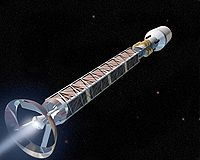


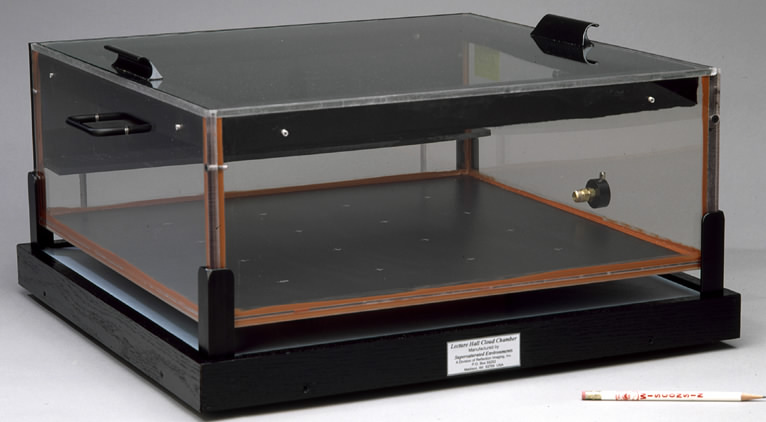
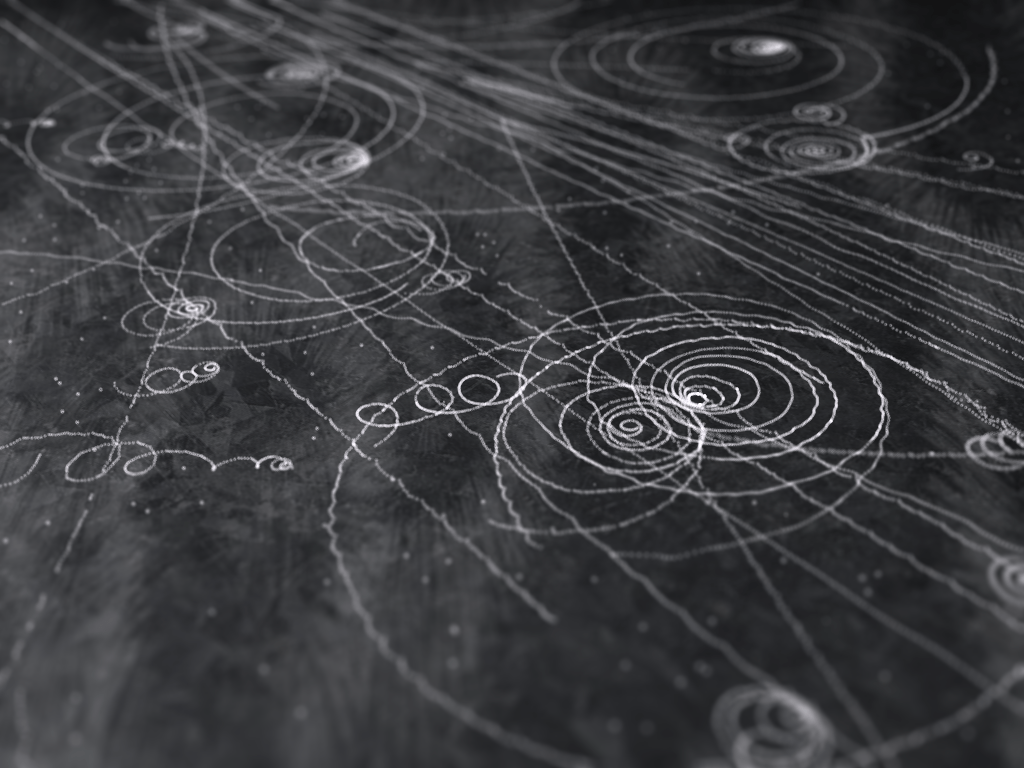
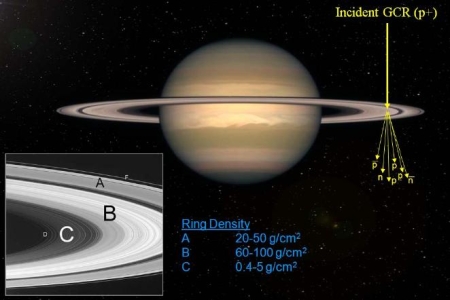
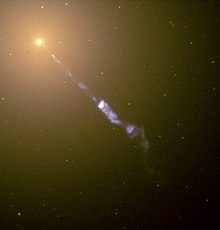


No comments:
Post a Comment